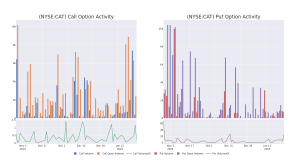
The October employment report released Friday morning showed the U.S. economy added only 12,000 jobs in October, well-below estimates of 113,000 and the lowest monthly pace since December 2020. Economists are weighing in on the impact of the hurricanes on the report and the potential for future interest rate cuts.
Experts Weigh In: Jeffrey Roach, chief economist for LPL Financial, indicated that hurricanes across the Southeast likely affected the establishment survey. He also noted response rates for the household survey were within normal ranges.
He said investors should focus on the household survey data which showed long-term unemployment rose to 22% of total unemployed persons and the number of permanent job losers edged up to 1.8 million in October versus 1.2 million in February 2020. Roach sees the Fed cutting rates at its next two meetings as economic conditions weakened.
“Given the storm-related distortion, the Fed is in a tight spot as they adhere to data-dependency,” Roach stated.
Quincy Krosby, chief global strategist for LPL Financial, said the Federal Reserve will have to “do the math” on the weaker-than-expected employment report to determine if it reflects only the effects of the hurricanes and the Boeing workers’ strike or if it shows a broader deterioration in the labor market.
Bill Adams, chief economist for Comerica Bank, highlighted the impact of the hurricanes on the jobs report and expects employment to rebound quickly as recovery efforts are underway. However, Adam noted the downward revisions to August and September data reveal the job market was cooler than previously thought. He anticipates the Fed will cut interest rates by a quarter percent at next week’s post-election decision.
Joseph Brusuelas, chief economist for RSM, sees hiring as slowing from its “turbocharged” pace following the pandemic and returning to a more sustainable pace for an economy at full-employment.
Brusuelas said that after removing “the noise” resulting from hurricanes and the strike, RSM sees hiring slowed to near a 120,000 pace per month. He expects the Fed to “ignore the noisy topline” and cut its federal funds policy rate by twenty-five basis points at next week’s meeting.
The Takeaway: Overall, economists seem to agree that the hurricanes and Boeing strike had a major impact on the October jobs report and noted the unemployment rate remained steady at 4.1%. Most expect the Federal Reserve to look past the distorted October hiring number and cut rates by 0.25% at its next meeting.
Markets are reacting to the cooler-than-anticipated jobs report by moving higher Friday on rate cut expectations. The SPDR S&P 500 ETF Trust SPY is up 1.14% at the time of publication, rebounding from a 1.9% decline on Thursday.
Read More:
Image: Csaba Nagy from Pixabay
Market News and Data brought to you by Benzinga APIs
© 2024 Benzinga.com. Benzinga does not provide investment advice. All rights reserved.


